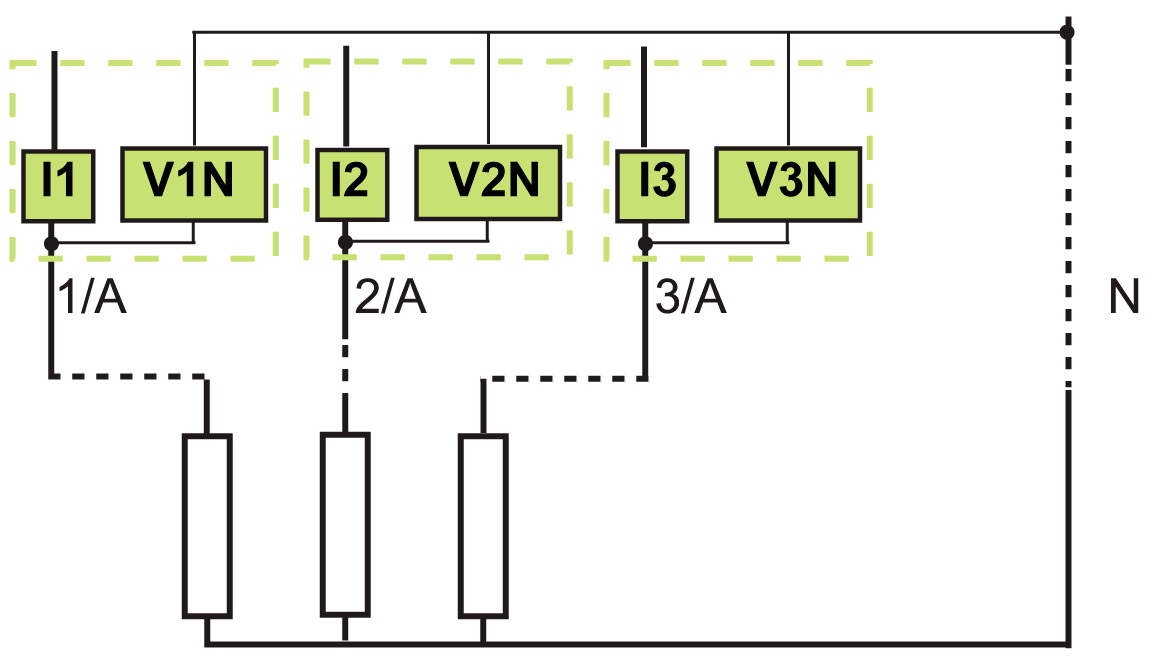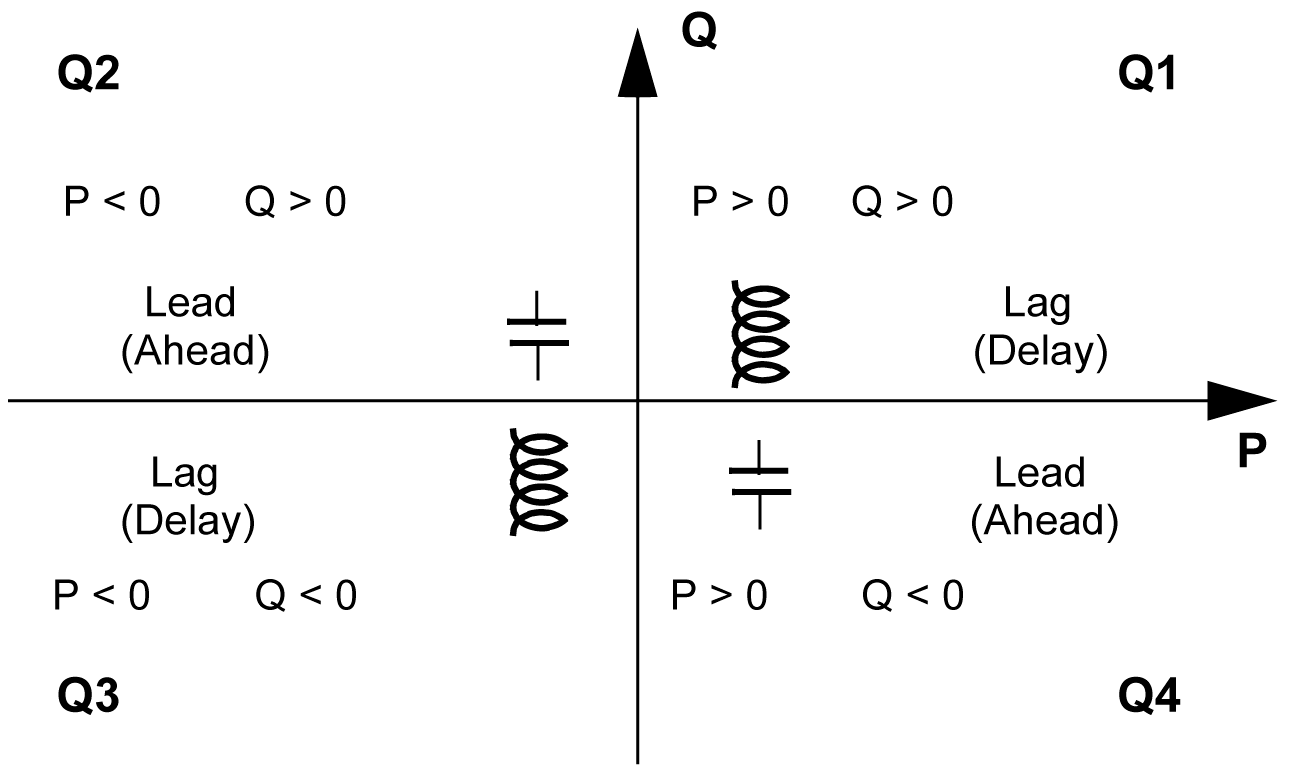Power Metering
Presentation
The control unit calculates the electrical quantities required for power management:
-
The real-time values of the:
-
Active powers (total Ptot and per phase) in kW
-
Reactive powers (total Qtot and per phase) in kVAR
-
Apparent powers (total Stot and per phase) in kVA
-
-
The maximum and minimum values for each of these powers
-
The cos φ and power factor (PF) indicators (total and per phase)
-
The operating quadrant and type of load (leading or lagging)
All these electrical quantities are continuously calculated and their value is updated once a second at rated frequency.
Principle of Power Metering
The control unit calculates the power values from the current and voltage samples.
The calculation principle is based on:
-
Definition of the powers
-
Set value of the power sign (circuit breaker powered from upstream (top) or downstream (bottom))
Calculations use harmonics up to the fifteenth.
Total Power Calculation Method
The total reactive and apparent power can be calculated by one of the two following methods:
-
Vector
-
Arithmetic (factory setting)
The calculation method can be set as follows:
-
On the MicroLogic X display screen, at
-
With EcoStruxure Power Commission software
3-Pole Circuit Breaker, 4-Pole Circuit Breaker
When there is voltage measurement on the neutral (4-pole or 3-pole circuit breaker with ENVT wired and configured), the control unit measures the power by using 3 single-phase loads downstream.
When there is no voltage measurement on the neutral (3-pole circuit breaker on power system without neutral) an internal voltage floating reference is used to measure power.
3-Pole Circuit Breaker, Distributed Neutral
Declare the ENVT in the system type setting.
Power Sign and Operating Quadrant
By definition, the active powers are:
-
Signed + when they are received by the user, that is, when the device is acting as a receiver.
-
Signed - when they are delivered by the user, that is, when the device is acting as a generator.
By definition, the reactive powers have:
-
The same sign as the active energies and powers when the current lags behind the voltage, that is, when the device is inductive (lagging).
-
The opposite sign to the active energies and powers when the current is ahead of the voltage, that is, when the device is capacitive (leading).
Power Sign Convention
The sign for the power running through the circuit breaker depends on the type of connection:
-
Circuit breakers with the active power flowing from upstream (top) to downstream (bottom) should be set with the power sign P+
-
Circuit breakers with the active power flowing from downstream (bottom) to upstream (top) should be set with the power sign P-
Set the power sign convention as follows:
-
On the MicroLogic X display screen, on the screens .
-
With EcoStruxure Power Commission software
-
By sending a setting command using the communication network (password-protected)


